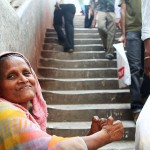 The crowdfunding movement has gained a huge amount of publicity in recent years, but it’s important to remember that it began life in the kind of micro loans that were believed to be crucial in the fight against poverty around the world.
The crowdfunding movement has gained a huge amount of publicity in recent years, but it’s important to remember that it began life in the kind of micro loans that were believed to be crucial in the fight against poverty around the world.
The book Scarcity, by Sendhil Mullainathan and Eldar Shafir, however casts a degree of doubt on just how effective this has been. It looks at poverty through the lens of behavioral economics, and suggests that the intrusion of poverty into our mental ‘bandwidth’ prompts the poor to make worse decisions.
The authors highlight how this often results in poor financial decision making, especially when it comes to the kind of credit used to deal with their particular circumstances.
Having to cater to the short-term almost inevitably leads to poor long-term decision making.
What does this mean for microfinance?
Well, as you can imagine, there are a number of potential implications, such as the need for insurance to buffer against fluctuating income levels, or the production of slack to encourage better decision making.
Having a reliable form of finance can decrease the need to tunnel, or in other words make it easier to keep the numerous balls we all have to juggle in the air.
A new entry into the microfinance arena is the Mangala Bank. It’s an autonomous bank that has been setup in the city of Gaya, India. Where it stands out is that it has been setup by a group of beggars, with members able to save money for a rainy day.
The rationale behind the new bank is that beggars are normally deprived traditional sources of finance due to inadequate proof of identification. They’re not, therefore, able to create a bank account, save money or do any of the other things that many of us take for granted.
Each member is required to deposit 20 Rupees (or ~ $0.35) every Tuesday, which totals around 800 Rupees per week for the bank.
It is then able to lend money to members in the case of emergency, such as for healthcare. As the lending is maintained within the community, it’s hoped that it will encourage more responsible behavior. The interest rates are likely to range from 2-5 percent.
The studies into scarcity highlight how easy it is to dig yourself further and further into debt by making poor financial decisions. Hopefully having banking maintained and offered within the communities they serve will help to overcome that.
It’s certainly a project worth following with interest.
Interesting project. Innovation from the bottom of the pyramid. I like it.